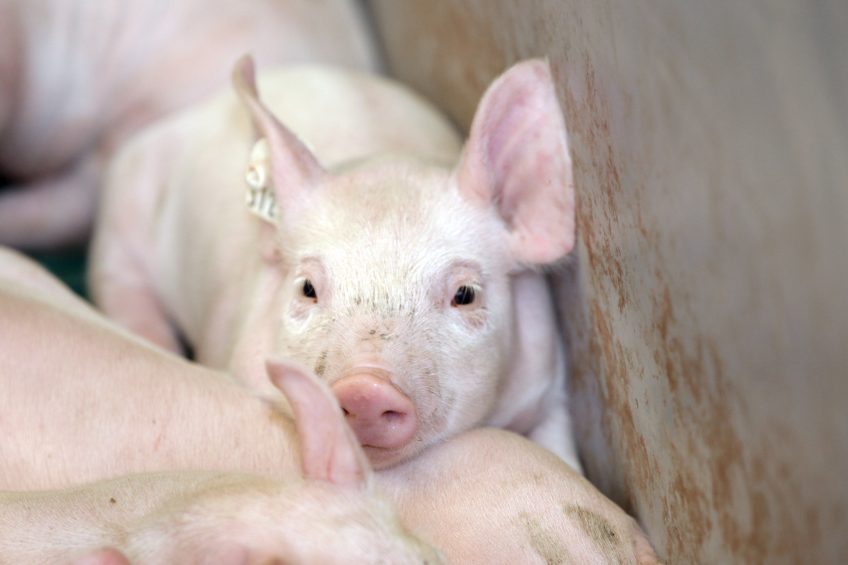One health by caring and performing

There are numerous important questions to ask ourselves and think about regarding antibiotic use in livestock production. With a twofold approach, Care and Perform, Nuscience is helping to give an answer to these questions.
What if animals can’t be treated anymore from bacterial infections? What if antibiotics do not work effectively against pathogens and the latter have a free pathway to invade the intestinal epithelial cells and to harm the host? What if pigs can’t survive a Brachyspira infection? What if E.coli or Salmonella infections cannot be treated anymore because there are no means available? What happens to the farmer, the feed and food supply when nothing helps anymore to secure the health status of the animal?
Antimicrobial resistance (AMR) is the recurrent theme behind all these questions. The demand for animal protein for human consumption is rising globally at an unprecedented rate. To fulfil this demand, modern animal production practices are associated with the regular use of antibiotics. Antibiotics are used in food producing animals to treat clinical diseases and to prevent or control common diseases to obtain and enhance animal growth. The different applications of antibiotics in food animals have been described as therapeutic use, prophylactic (preventive) use and sub therapeutic (antibiotic growth promoters) use. The pace of the increase of AMR and the spread of this resistance predict that within 10 years no reliable treatments will be left to counter bacterial infections. The resistance of bacteria can be simply explained and is a normal natural phenomenon (Figure 1).
Figure 1 – Schematic representation of the antimicrobial resistance process.

Bacteria are exposed to an enormous selection pressure due to the massive use of antibiotics in the host. Regarding the principle ‘survival of the fittest’, individual organisms may carry mutations of bacterial strains, that render antibiotics ineffective, conveying a survival advantage to the mutated strain. In the presence of antibiotics, advantageous mutations can also be transferred via plasmid exchange within the bacterial colony. This results in the proliferation of the resistance and the rising danger of uncontrolled bacterial infections.
Increasing pressure
The animal sector is aware of the need for antibiotic reduction. Actions are being taken and antibiotic use continues to be under debate. Consumers, retailers and politicians are putting a lot of pressure on the animal industry to reduce antibiotic use. The first result was the prohibition of antibiotic growth promoters in 2006 in Europe. More recently, in April 2017 China banned the use of colistin, as a consequence of the resistance of the E. coli bacteria found in 2015. In the United States, the Food and Drug Administration (FDA), presented new federal rules in which all 31 antibiotics for growth promotion were completely withdrawn. Nevertheless, it is projected that antibiotic consumption will rise by 67% in 2030, and nearly double in Brazil, Russia, India and South Africa. This rise is likely to be driven by the growth in consumer demand for livestock products in middle-income countries and a shift to large-scale farms where antibiotics are used routinely. The concerns linking bacterial resistance towards antibiotics in the animal industry finds its origin in the emerging public health crisis. Evidence that antibiotic use in food animals can result in antibiotic resistant infections in humans has existed for several decades.

It is clear that there is a need for initiatives to preserve antibiotic effectiveness while ensuring food security. It is the responsibility of the farmer, the veterinarians, the feed mills, the premix suppliers and the additive companies to monitor and control the use of antibiotics and to find alternatives to reduce the overall AMR. This responsibility is a part of the ‘One health’ concept to achieve an optimal health for people, animals and the environment. Since animals are linked with people and the environment, one has to thrive to provide solutions in the animal industry for future generations in a measurable, relevant and sustainable way by working locally, nationally and globally together.
Figure 2 – Nuscience’s approach to the ‘One health’ concept.

Nuscience contributes to the ‘One health’ concept by providing additives and functional feed ingredients in the Health4U portfolio (see Figure 2). Solutions are available to reduce antibiotic use and the associated antibiotic resistance. The company provides solutions consisting of medium chain fatty acids (MCFAs), functional fibres, phytogenics, natural polyphenols or a combination thereof.
For pigs, poultry and cattle, Nuscience’s approach to the ‘One health’ concept consists of 2 pillars:
- Care
- Perform
1. Care: The ‘Care’ pillar focuses on reducing the preventive and therapeutic antibiotic use. The main goal for these additives is to act as a nutritional solution to reduce the infection pressure and to prevent the outbreak of bacterial diseases. Different strategies are applicable to counter the bacteria. On the one hand, free activated MCFAs counter gram-negative or gram-positive infections in the stomach. The direct antibacterial effect of the MCFAs prevents the growth of pathogens like E. coli, Salmonella or clostridium and increases the health status in the animal. On the other hand, a functional fibre concept will ensure the agglutination of pathogens in the intestine and the ‘washing out’ effect from the gastrointestinal tract. Also the binding of endotoxins, being released when a pathogen is killed off, can increase the animal health. When the disease pressure is under control, the focus shifts towards additives to maximise the technical parameters such as growth and feed conversion ratio.
2. Perform: Additives, listed in the pillar ‘Perform’, will increase nutrient digestibility by improving intestinal health and will keep the bacterial load low. Specific phytogenic mixtures increase enzyme secretion and benefit the digestion of the feed. Antibacterial activity is secured by the use of MCFAs, phytogenic mixtures and a functional fibre concept. Decreasing the pathogen load will improve the intestinal morphology resulting in a high nutrient absorption by the epithelial cells. In addition, natural polyphenols will reduce oxidative stress in the intestine leading to a stronger barrier function of the intestine due to stronger tight junctions. The main goal for additives listed in the pillar Perform is to replace antibiotic growth promoters that are added to the feed at subtherapeutic dosages.






